Anxiety and the Nervous System: What’s going on inside my body?
Do you sometimes feel anxious or panicky, and wish you knew why? Keep reading for an explanation of how our bodies process stress and some useful strategies on how to quickly calm yourself down.
You may have heard of the phrase “fight-or-flight” in relation to anxiety, but to understand what that really means, we need to start at the beginning. Since our hunter-gatherer days, humans have always had an inbuilt threat-detection system to help us stay alive. If a predator was to approach us, we would need to react very quickly – so quickly, that we need to do it without thinking. So, we developed a system of engaging our body into fight-or-flight mode as soon as one of our senses detects a danger.
The body is made up of a huge and complicated network of nerves, organised into Nervous Systems (NS). When our fight-or-flight response is activated, this triggers the Sympathetic Nervous System, or SNS, in the body. For example, if out of the corner of your eye you saw some movement in the distance that could be an animal coming to hunt you, your SNS would be triggered, and the body would start producing the chemicals called hormones. Certain hormones, such as adrenaline and cortisol, make us faster and stronger for a very short amount of time. The advantage of this system is that the presence of a potential threat in the environment can trigger a switch to the SNS which can then release the necessary stress hormones into the bloodstream without you having to consciously think “I’m in danger… I need adrenaline”. This sophisticated mechanism enabled us to react as fast as possible, and therefore increase our chances of staying alive, by running from or attacking the threat. If, when your conscious brain caught up, you recognised that the movement you saw was just a tree moving in the wind – well, no harm done, better safe than sorry, and your adrenaline levels would go back down shortly.
When relaxed and not detecting any threats, the body’s Parasympathetic Nervous System (PNS) regains control. This Nervous System is the opposite of the SNS and is often referred to as our “rest-and-digest” mode, as this is when we can relax, sleep, and eat.
This “worst-case scenario” method of identifying and preparing for threats served us very well and enabled the human race to survive.
Flash forward to 2022, and most of us don’t encounter many wild predators anymore, but our nervous systems are still very much active. When our parasympathetic nervous system is in control, we can get good quality sleep, relax, socialise with friends, and our body can function healthily. But should we encounter a danger, the Sympathetic nervous system will still take over. For example, if you go to cross a road and a car comes speeding towards you, you can quickly move out of the way without needing to tell your body “Move”. Our SNS could also kick in when we’re extremely worried, arguing with loved ones, or stressed at work. The body’s reaction to being in fight-or-flight mode could include feeling dizziness or fainting, inability to slow heart rate, abnormally fast heart rate, digestive issues, lack of pupillary response or visual problems, e.g. blurriness, abnormal sweating (either too much sweating or not sweating enough), and much more. The stress of a perceived threat such as public speaking isn’t going to kill us, but the body reacts as if it was.
In people with anxiety disorders, the sympathetic nervous system takes over when we should be relaxed, telling us that we need to prepare for danger. This puts you on high alert and can leave you feeling on-edge.
Too much time in fight-or-flight mode and not enough time with the sympathetic nervous system in control can leave you feeling anxious, low, tired, paranoid, and can even cause unwanted physical sensations like headaches, muscle pain, nausea.
So, what can I do with all this?
Now that we understand a bit about how our Nervous Systems work, we can use this to our advantage. Normally, we detect a threat, and this tells our Nervous System to put our body in fight-or-flight mode. But if we work backwards, we can physically calm the body in a way that activates the PNS and moves us into rest-and-digest mode. We can do this by engaging a part of the body called the Vagal Nerve, which slows the SNS and allows us to feel calm and relaxed.
See below for some quick and easy techniques you can do to help bring your Parasympathetic Nervous System back online. These are often referred to as grounding techniques, as they encourage you to recognise that you are not in danger and feel grounded. They can take some practice if you’re not used to interrupting your anxious thoughts, so be patient with yourself, and don’t give up if you find it hard to focus the first few times.
Vagal Tone
- Locate your pulse
- Take a deep breath in hold for 3 seconds
- Noticing heart faster on the in breath
- Exhaling and holding for 3 seconds
- Noticing heart rate decrease on the out breathe
External Monologing
- Begin by expressing your words verbally
- Slump your head and or close your eyes
- Speak softly and slowly trying to calm the pace of your thoughts
- Speak out loud about anything, it does not have to be important
- Keep your attention on controlling your tone and pace of your words
Softening Eyes
- Squeeze your eyes very tightly closed
- Slowly relax the muscles around your face keeping your eyes closed
- When feeling comfortable open your eyes
- Try and begin the production of saliva
5 4 3 2 1 Technique
- Acknowledge 5 things you can see around you
- Acknowledge 4 things you can feel around you
- Acknowledge 3 things you can hear around you
- Acknowledge 2 things you can smell around you
- Acknowledge 1 thing you can taste
Mindfulness Distraction
- Pick a colour (potentially your favourite)
- How many different shades of that colour can you see around you?
- Other than the exercise when was the last time you remember seeing that colour?
- If still feeling stressed, pick another colour
Mindfulness Mediation
- Get Comfortable. Find a quiet place where you won’t be disturbed
- Get in position. You might try sitting cross-legged or upright in a chair
- Focus on your breaths, breathe for 3 seconds, and hold for 3 seconds
- Bring your thoughts back to breathing when getting distracted
- Make a commitment to the first 5 minutes of mindfulness
Physical Distraction
- Take a moment to feel your feet on the floor
- Choose three parts of your body to move, starting from your lower body moving up
- Moving each part for 30 seconds
- If still feeling stressed, if available hold and squeeze and ice cube (don’t continued to hold if its causing pain)
References
Breit, Kupferberg, Rogler and Hasler, (2018)
Alshak MN, M Das J. Neuroanatomy, Sympathetic Nervous System. [Updated 2021 Jul 26]
Gilbert, P., The evolved basis and adaptive functions of cognitive distortions (2011)

Contributed by Polly and Logan,
Proud members of the First Steps ED team!


